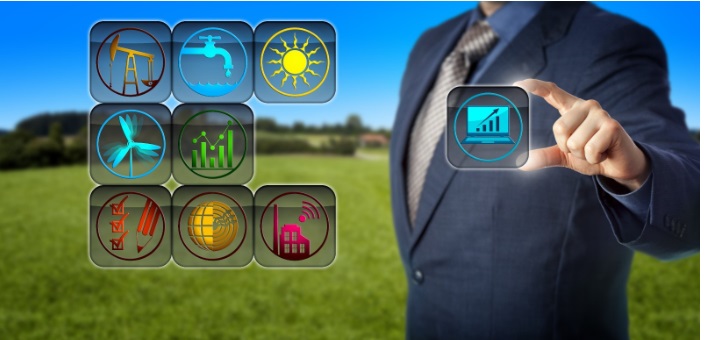Tracking and reporting greenhouse gas (GHG) emissions has become necessary for businesses to address the climate crisis and meet sustainability goals. Scope 1 and 2 emissions, generated from internal operations and purchased electricity, are traditionally reported by companies and easily tracked as they are directly tied to aspects under the company’s control. Scope 3 emissions originate from a company’s value chain (suppliers, customers, and product lifecycle) and are significantly more challenging to track accurately. Since scope 3 emissions can account for 75% of a company’s total carbon footprint, addressing reporting complexities is critical to ensure operations align with environmental goals. This post will dive deeper into Scope 3 GHG emissions reporting challenges and provide tips to help companies gain more visibility and control.
Scope 3 GHG Reporting Categories
Scope 3 emissions encompass 15 categories that cover the entire value chain of an organization and result from activities that are not under the reporting company’s control. Not all categories are relevant to all organizations, but those that are should be tracked so that companies can fully understand the environmental impact of their operations. Categories under scope 3 include upstream emissions generated from suppliers, purchased goods, fuel, transportation and distribution, operational waste, business travel, commuting, leased assets, and downstream emissions generated from transportation, processing, product usage, waste disposal, and the end-life of products sold by the company. Each category’s carbon footprint varies, and the data collection and calculation methods differ depending on the category.
Though the company may not directly control scope 3 emissions, reporting is a massive opportunity for reduction, providing visibility into areas needing improvement and encouraging decision-makers to choose vendors and suppliers with more sustainable practices. Even though requirements and standards are in place for scope 3 emissions, collecting the data needed can be challenging as information comes from multiple sources that can be hard to quantify. For example, if a company uses multiple suppliers for a product, it will need to track scope 3 activities from each entity, and that data might not be readily available.
Applying a scope 3 mapping technique enables organizations to identify the sources of emissions easily, informing better business decisions and enabling more accurate reporting. Ultimately, it is critical to establish a starting point, even if that is only an estimate. Focusing on the most relevant scope 3 categories helps companies gain meaningful insight to inform change. Reporting and trackability will undoubtedly improve over time.
Regulatory Requirements
Government policies and regulations around GHG emissions reporting are continually evolving, resulting in frequent changes to reporting requirements. Companies must stay up-to-date with regulatory requirements and voluntary reporting initiatives to remain compliant and avoid fines and reputational damage. Adopting a voluntary reporting initiative demonstrates a company’s commitment to sustainability and facilitates transitioning to new regulations as they emerge. For example, companies may optionally choose to report in more scope 3 categories than required, establishing foundations of trust and transparency.
Data Collection
Data collection is the most significant challenge companies face while creating a report of scope 3 emissions, as this involves gathering data from the entire value chain. This task becomes even more complex when dealing with suppliers who do not report their emissions or have outdated documentation. A possible solution is to use a collaborative platform shared with suppliers to simplify data collection. The platform can allow suppliers to easily upload and update their emissions data and provide better visibility of the company’s GHG footprint.
Calculation Methods
Different calculation methods exist to measure scope 3 emissions, and their complexity varies based on data availability and access. The Greenhouse Gas Protocol (GHG protocol) is currently the most widely accepted model. The GHG protocol provides organizations with detailed instructions on calculating scope 3 emissions for each category, making data collection and calculation more manageable.
Stakeholder Engagement
Stakeholder engagement is essential when reporting scope 3 emissions as they result from the entire supply chain. By leveraging a collaborative approach, companies can work with their suppliers to identify and mitigate emissions sources while developing partnerships that will benefit everyone involved. While establishing such agreements is not always straightforward, any barriers may prove to encourage companies to seek more collaborative partnerships wherein emissions reduction goals are aligned.
Reporting scope 3 GHG emissions can be challenging; however, it offers companies a unique opportunity to improve their supply chain and strengthen supplier relationships while reducing carbon emissions. While it is a complex process, overcoming scope 3 emissions reporting challenges can lead to better-informed business decisions that positively impact the environment, the community, and the company’s reputation. By establishing data collection strategies, stakeholder engagement, scope 3 mapping techniques, and GHG protocol calculations, companies can overcome scope 3 emissions reporting challenges and improve their sustainability initiatives.
Publisher Bio
The SafetyStratus Research Advisory Group (RAG) brings together thought leaders from the global environmental, health, and safety community to promote best practices and provide key insights in the profession and the industries they serve. The Research Advisory Group also advocates, where practical, the intersection of and advances with the use of technology, such as the SafetyStratus enterprise EHS software platform. Group membership consists of representatives from across varied disciplines and market sectors as well as select members of the SafetyStratus team.
The primary objectives of the SafetyStratus RAG partnership are to:
- Build a strategic partnership between EHS practitioners and the SafetyStratus team.
- Provide engaging and practical content to the global EHS community.
- Provide discipline and market feedback specific to SafetyStratus products and services.
While the objectives of the RAG are varied, the primary public-facing outcome will be available through engaging and practical content found on the SafetyStratus resource pages. Various articles, papers, and other valuable resources will be produced and shared as part of an ongoing effort to cultivate a robust community. Ultimately, the SafetyStratus RAG will expand to have a broader reach and provide opportunities for more inclusion by all interested EHS professionals in a collaborative community environment.
